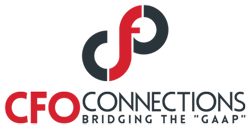SBA is reopening the Paycheck Protection Program (PPP) for First Draw Loans the week of January 11, 2021. Here is a summary of PPP 2.0. For additional details, application forms and FAQ, please refer to the SBA’s website https://www.sba.gov/funding-programs/loans/coronavirus-relief-options/paycheck-protection-program. Companies should check with their lenders on when they will begin accepting applications.
Overview
First Draw and Second Draw (companies that previously received a PPP loan) PPP Loans can be used to help fund payroll costs, including benefits. Funds can also be used to pay for mortgage interest, rent, utilities, worker protection costs related to COVID-19, uninsured property damage costs caused by looting or vandalism during 2020, and certain supplier costs and expenses for operations. The program is open until March 31, 2021. At least $15 billion is being set aside for First Draw PPP loans and $25 billion set aside for Second Draw PPP loans to eligible borrowers with a maximum of 10 employees or for loans of $250,000 or less to eligible borrowers in low- or moderate-income neighborhoods. To promote access for smaller lenders and their customers, SBA will initially only accept loan applications from community financial institutions starting on January 11, 2021 for First Draw PPP loans and on January 13, 2021 for Second Draw PPP loans.
Forgiveness Terms
- Covered period can be anywhere from 8 to 24 weeks following loan disbursement.
- Forgiveness depends on maintaining employee and compensation levels, spending loan proceeds on payroll costs and eligible expenses and at least 60% of proceeds spent on payroll.
Who Can Apply?
- Companies with 500 or fewer employees for First Draw PPP loans and 300 or fewer employees for Second Draw PPP loans.
- First draw eligibility includes nonprofits, veterans’ organizations, self-employed individuals, sole proprietorships and independent contractors.
- Companies applying for second draw must demonstrate a 25% reduction in gross receipts in the same quarters in 2019 and 2020.
How Much is the Loan Amount?
- 2.5 times average monthly payroll costs up to $2 million for most eligible businesses.
- 3.5 times average monthly payroll costs up to $2 million for eligible businesses in the accommodation and food service industries.
Here are lessons learned from some of CFO Connections’ clients from the first round of the PPP and our recommendations on how to better position for PPP 2.0.
- Companies that worked with their CPAs received a diagnostic review of their loan applications, verification of the estimated loan proceeds, and coordination with their lenders during the application process.
- Companies that maintained accurate and up-to-date financial information were able to breeze through the application process with ease and received their loan proceeds much sooner than others.
- If you are applying for a First Draw PPP loan and feel that you are facing some accounting challenges in providing timely and accurate financial information, now is the time to engage a CPA to help you sort through the information so that you are able to take advantage of PPP 2.0.
- If you are applying for a Second Draw PPP loan this time around, we recommend you begin compiling information on your quarterly gross receipts for 2019 and 2020 to determine whether your business is eligible.
- Companies who applied for PPP loans last year have had to endure the ever-changing regulations surrounding the program. Most are currently applying for loan forgiveness with their lenders. Companies that work with their CPAs receive assistance in maximizing the amount of the loan being forgiven. This is achieved through ensuring the completeness of their forgiveness application, the proper documentation to submit and retain for their record, step by step guidance on completing the forgiveness application through the lenders’ online portals and most importantly, liaison with lenders on technical matters.
We have advised and assisted our clients on this program since the program opened last year. This pandemic has affected most of us in a significant way and we want to give back to our community by offering a complimentary 20-minute consultation on PPP 2.0. Please contact us for guidance that could help you reach a lifeline for your business.
